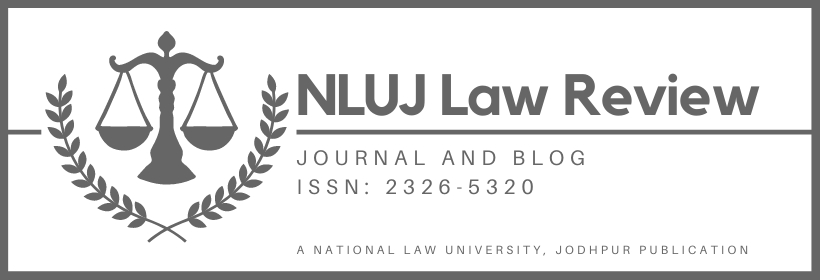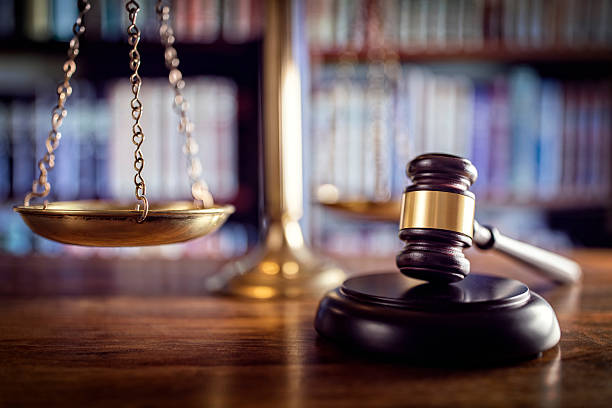Be it the androgynous Ardhanarishvara (half man-half woman), or king Ila (spending parts of his life as both man and woman), Indian mythology mentions homosexuality, but never has it demanded one to go through Conversion Therapy (“CT” or “Therapy”). Had it not been for a lesbian couple from Madurai, Trans people of Tamil Nadu would have still been exposed to this stringent process without any legal immunity. The said couple ran away from their respective homes under the fear of separation and their parents filed a missing report. The police, on finding the couple, interrogated them as to why they ran away. Annoyed by the interrogation and dominating parents, the couple filed a writ petition at the Madras High Court, whereof the single bench in the matter of S. Sushama and Ors. v. Commissioner of Police (“Sushama”) banned CT in June this year. This judgement facilitates the increasing scope of Article 21 of the Constitution of India (“COI”) and starts a debate as to how CTs are futile in contemporary times. These issues will be analyzed in this blog by the author.
CT or Reparative Therapy aims at swapping one’s sexual orientation to that of a heterosexual. It evolved from a set of Aversion Therapies, an assortment for several different therapies used for conditioning human beings, which were first substantiated in India through the Indian Journal of Psychiatry in 1983.[i]
A Brief History of the Issue in Indian Parlance
Over the years, the Indian judiciary has tried to take proactive steps to highlight the importance of Transgender rights. India witnessed a wave of exhilaration, when the Apex Court in the case of National Legal Services Authority v. Union of India (2014) recognized the “third-gender”, zeroing on one’s own estimation of their gender rather than focusing on the biological attributes of it, paving their way towards a dignified life elucidated under Article 21 of the COI. In addition, the judgment also recognized Transgender rights under Article 14 (Right to Equality), Article 15 & 16 (Right against Discrimination), and Article 19(1)(a) (Freedom of Expression) amongst others. Besides, it held that nobody who perceives themselves as the third gender will be subjected to any sort of medical examination. On similar grounds, the case of Common Cause v. Union of India (2018) was interpreted. It stated that the right to exercise self-determination includes the right to choose and someone with a competent mental faculty can efficiently choose between different medical treatments. Moreover, in the case of Samira Kohli v. Dr. Prabha Manchanda & Anr., a basic outline for the procurement of legitimate consent was drawn out. This was followed by the landmark judgement of Navtej Singh Johar v. Union of India Ministry of Law and Justice (2018). It acts as the yardstick to decide constitutionality of Section 377 and how the demarcation of intercourse between individuals as natural or unnatural is not lawfully sound. With CT getting outlawed in Sushama case, another box for transforming Indian society into a comprehensive one has been ticked and Courts have established their intent to move towards a progressive society.
The aforementioned cases are of huge significance for the transgender community of India, for they not only legally recognized the rights of the community but also paved the way for them to live with honour and respect. While deciding Sushama case, Justice N. Anand Venkatesh said he was not “woke enough” and hence, took sessions with a psychologist to understand the matter at hand in a better way. This gesture by a senior member of the Indian judiciary indicates how one can disrupt the parti pris, as and when promoted, it will be much easier to guarantee social requisites to the community. Such precedents will also facilitate the advancement in thinking patterns of the members of the society.
Psychological Analysis vis-à-vis Penal Provisions
Even if the judiciary walks an extra mile, with the pre-existing approaches still in practice, India will only constitute a decremental society. The rationale behind promotion of CT was based on the idea of homosexuality being a mental disorder,[ii] however, Psychological Diagnostic Manuals (2013) no longer considers it to be one. Marriage in Indian society is perceived as a sacrosanct institution for the prolongation of the human race, and it is believed that homosexuality becomes a hinderance to this institution. The said Therapy is used to eradicate such homosexual or gender identity disorders. Queer and Trans youth are often pressurized by their own families to undergo CT and other procedures which are not performed only by medical practitioners but by shamans, ojhas, etc. as exorcism and are beguiled into believing that their innate perception of gender is flawed. The therapy uses problematic measures, often resorting to extreme sexual violence in the name of corrective rape which is punishable under the Transgender Persons (Protection of Rights) Act, 2019. However, the Transgender Persons (Protection of Rights) Act, 2019 only punishes the offender for up to two years whereas; rape of cisgender women is punishable with rigorous imprisonment for not less than ten years under Section 376 of the Indian Penal Code (“IPC”). Carrying out such practices without having any scientific backing creates serious complications like Gender Dysphoria, arising out of gender incongruence. In CT, this incongruence is created artificially, which can even lead to death. This also causes mental unrest, hence should be covered under the purview of “hurt-infirmity” under Section 319 of IPC, as laid out in Sushant Chandana v. State & Anr. (2011). Similar principles are also outlined under Section 44 of IPC.
Further, medical practitioners can also attract criminal liability for performing such therapies which constitute medical negligence under Section 304-A of IPC, and performing such procedures is also a serious violation of ethics. Often CTs take place in an unauthorized manner in the name of Gender Affirmation Surgeries that are regulated and certain prerequisites are needed to carry out the same. Medical practitioners may attract civil liability in situations of unauthorized surgeries. All of these procedures strike out the principle of free consent featured under Section 90 of IPC.
Global Perspective
The queer and transgender communities have been struggling to find acceptance and respect in the Indian society. They are exposed to continuous public brutality, day-to-day belittling, alienation, and also held in contempt of being different from their cisgender counterparts. All of it eventuates in abuse, self-destruction or suicide, as happened in the case of Anjana Harish, who was forced by her parents to undergo CT after she came out as bi-sexual. Discriminating against queer people on the grounds of gender identity and sexuality, while limiting their constitutional rights, would steer the way towards a pecking order and the concept of inclusivity will fade away.
A global survey by International Lesbian, Gay, Bisexual, Trans and Intersex Association (“ILGA World”) underlines four nations, namely Brazil, Ecuador and Malta having countrywide laws barring the barbarous process of CT. Recently Germany brought in a legislation this year which criminalizes CT for minors and poses a liability towards people who advertise or offer it and towards parents for the violation of their guardianship. The nationwide ban on CT in Brazil was challenged in a lawsuit initiated by Christian Rozangela Justino (a psychologist who offered CT to his clients leading to suspension of his license in 2016), Judge Waldemar de Carvalho ruled in favor of Justino overruling the nationwide ban. The Federal Council of Psychology condemned this and raised their concerns about how this decision could usher the alarming possibility of the use of CT. Furthermore, it highlights several other countries for having meandering bans under their mental health laws. Victor Madrigal-Borloz an independent expert for United Nations Human Rights Commission, assembled a report on how 98% of those who underwent CT had to put up with physical as well as psychological damage.
Moreover, National Center for Lesbian Rights an American charitable organization – public interest law firm which is dedicated towards elevation of civil and human rights of the LGBTQ+ community started its Born Perfect: The Campaign to End Conversion Therapy for shielding the LGBTQ+ community by setting precedents at trial and appellate court levels across the country. In 2020, 300+ interfaith religious leaders from across the world came together to sign a declaration that called for a global ban on CT. This year Canada’s House of Commons by a vote measure of 263 to 63 approved of the Bill C – 6 (now moved to the Senate) that criminalizes CT across the country.
Conclusion – The Way Ahead
The Madras High Court judgement includes certain directions for the government for carrying out sensitization programs and Ministry of Social Justice and Empowerment to compile a list of Non-Governmental Organizations which will deal with the problems of the LGBTQ+ community and maintain confidentiality of who has approached them. Banishment of CT in Tamil Nadu is that extra mile that India required but there is a long way to go. Censured by major medical organizations, this heinous procedure is still executed in across the country.
The transgender community has been wrestling for their rights and safeguards, and the gradual introduction of regulations for their advancement and preservation is a pressing priority. It is pivotal to develop emotional intelligence amongst members of the society as it signifies farsightedness that is much needed to comprehend the circumstances. Inculcation of fundamentals of homosexuality and Trans behaviour at a higher-secondary level in school, consciousness programs, blanket campaigns inclusive of all genders can be organized by the concerned State Authorities for better cognitive recognition. Administering these steps will allow people to become familiar with how to make the non-cisgender community comfortable in their surroundings without feeling estranged. Lastly, it will annihilate the pre-conceived notion of homosexuality as a disease in a uniform and structural manner.
[i] Arvind Narrain & Vinay Chandran, Nothing to Fix (SAGE Publication, 2016).
[ii] L. M. Sakthivel, K. Rangaswami & T. N. Jayaraman, Treatment of Homosexuality by Anticipatory Avoidance Conditioning Technoque, 21 Ind. J. Psychiatry 2 (1979).
This article is authored by Tashi Saraf, student at Institute of Law, Nirma University, Ahmedabad.



